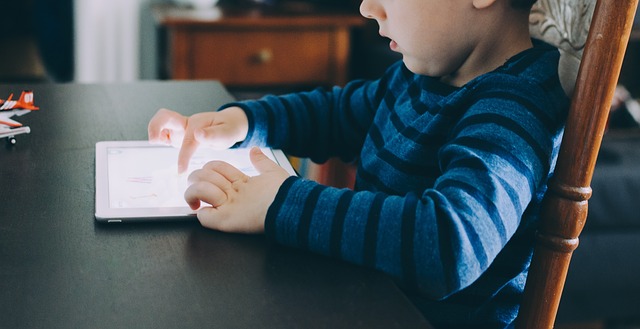
Kids and passwords
I am so proud of my son! He finally understood the importance of personal passwords! Today for second or third time Dawid turned his head away from me when I was typing in my iPad password to let him play his games. I think that when it comes to teaching kids safe Internet (or for that matter technology) experience one needs to work on few levels.
First – and the most important – is the mutual understanding and trust.
I worked out that Dawid has a school password the day he received it – he simply told me about it. OK, in our case, seeing both grown ups in front of laptops most of the time, for him it was an important initiation, something to talk about. But how to ensure they always share their new technological experiences with us? Well, I think that if you have a good communication channel and habits, it becomes yet another topic for discussion. Do you talk to your kids about how they feel about the weather? What are their friendships like? What are their passions, but also fears? You might think it’s irrelevant, but if for us, parents technology and Internet become an important area of every-day life, why would it not be the same for our kids? We love, we play, we discover, we feel concerned or surprised, praised or down – both off-line AND on-line. When I talk to my son about new game or iPad app (somehow iPad ended up as kids device, no?) I discuss it just as seriously as we discuss watching films or meeting friends – we manage it together, but I set up the rules and we need to trust each other (he has to trust my fair judgment, I have to trust his loyalty). When I explained to him the idea of a password as a personal information, just like a wallet or his school bag, which he would not like me to look into all the time – he seemed to be able to apply it to his and my password too.
Secondly – setting up, explaining and sticking to the rules.
Rules equal security and stability. Some parents might not realise, as it’s usually situations like ours that make us study the topic more. My son has lost his dad fairly early, so I had to ensure building the image and sense of HOME in his head and heart. I was lucky to realise and be served with advice that rules and restrictions are really not so much about limitations for kids, but about familiarity and security. Rules need to be clear, fair and human. They provide us all with a clear understanding of how the world works. So why not set them up with a transparent explanation of what they are for. And of course, consequently follow up. My son, for example, was a bit overwhelmed with YouTube videos of cartoons, Simon’s Cat and various vehicles. Initially, it looked like a good discovery, which sadly fairly quickly turned into addition, which let to slightly aggressive and fussy behaviour. So really, the rule of not browsing YouTube videos on iPad ( the alternative of rare one or two videos on a laptop is still here) had to be set up. I have also suggested alternatives – NASA has a great app for kids, including videos of space discoveries – all WITHIN the app. As for the password – I simply set up the password and explained that I have to know when he is using the device and how to ensure he is doing it right. It is also my own device, so it is fairly easy to see it as a question of accessing my – not his – device.
Finally – using available technical solutions to manage kids’ activities.
Talking is great, managing behaviour too, but in some cases, the technical approach might help too. Regardless of the device or activity, there are solutions that parents can predefine before kids start the experience. You can mange the activities, access to various types of content, as well as the time of activity. As mentioned above, on iPad we had plenty of alternative activities. Creative (visual and musical apps), reference apps for kids, apps teaching ABC and maths, and finally games. On an iPhone, you can simply set up an alarm clock to mark the end of the play. Password on iPad is a classic example of this too.
I do not think any of the three levels of my management of Dawid’s experience of technology and Internet would work on its own. Setting up a lock on the device is useless if kids can access the Internet from various sources. Setting up a rule without management of content is not enough. And at the end of the day – if we do not talk to kids and do not trust each other – be it a password, be it a rule – it will become impossible to manage their on-line behaviour. (I do not even dare to use the word “control” – I would argue the idea of control, even with kids).





0 Comments
Gabriela
It seems to me Dawid understood the instructions and rules very well. Good for you both!